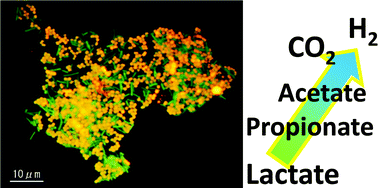Hydrogen fermentation using lactate as the sole carbon source: Solution for ‘blind spots’ in biofuel production
Abstract
Lactate is not believed to be a suitable substrate for hydrogen fermentation, although glucose and starch are. To eliminate this ‘blind spot’ in hydrogen fermentation, we showed that it is feasible to produce hydrogen with lactate as the sole carbon source by using mixed microflora as well as a single culture. Microflora were isolated from a methane fermentation system, and their hydrogen productivity, fermentation properties, and diversity were analyzed. Since previous studies used inoculum pretreatment to improve efficiency, we used both pretreated and non-pretreated samples. The hydrogen yield of the non-pretreated microflora sample was 0.43 mol/mol lactate, which is approximately 49 times the values reported previously. Megasphaera elsdenii was found to be the main lactate utilizing-hydrogen producing bacteria (LU-HPB) in this sample, but it is not heat-shock tolerant. Thus, heat-shock pretreatment reduces microbial diversity, including lactic acid bacteria (LAB) and LU-HPB, in the inoculum. This is another ‘blind spot’ of hydrogen fermentation from lactate. The hydrogen yield of M. elsdenii was approximately 0.4 mol/mol lactate. Considering the balance of metabolites in the reaction, even if the substrate was completely consumed for lactic acid fermentation, 0.8 mol hydrogen per mol of glucose may be recovered via homo-type lactic acid fermentation. Thus, LU-HPB do not require inoculum and/or substrate pretreatment and may improve the utilization of recalcitrant substrates such as xylose by cooperating with LAB. To our knowledge, this is the first study to identify and characterise a microbial hydrogen fermenter that can use lactate as the sole carbon source.


 Please wait while we load your content...
Please wait while we load your content...